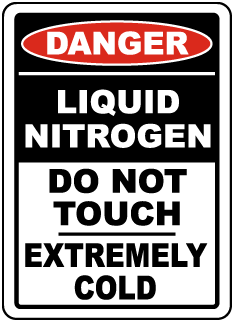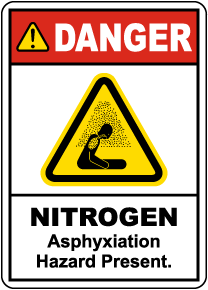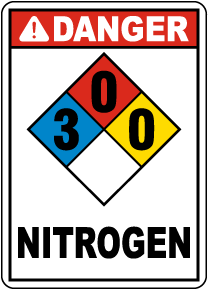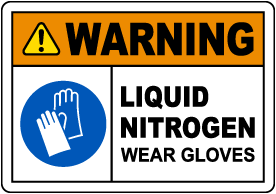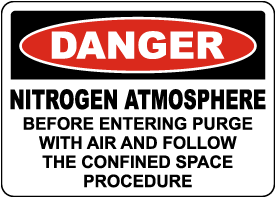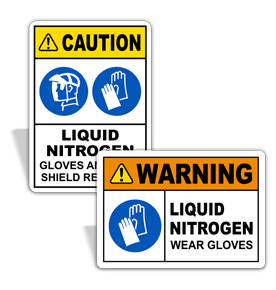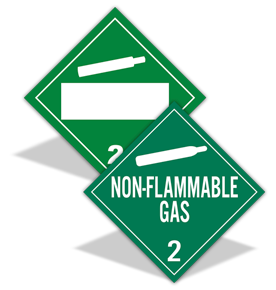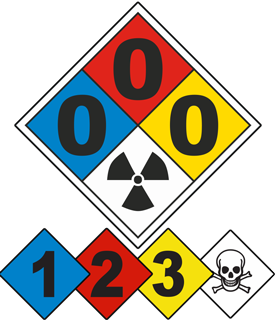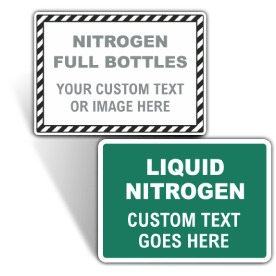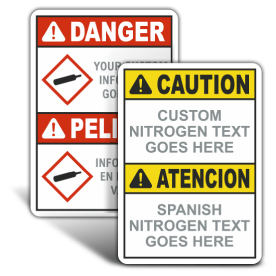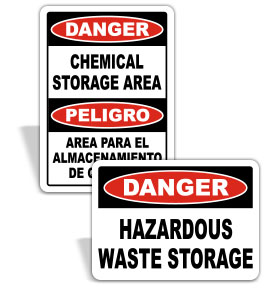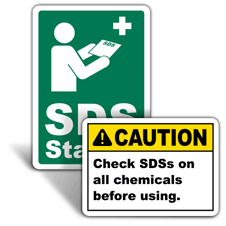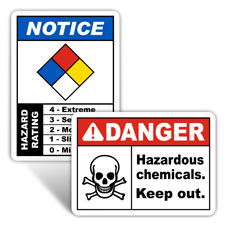Shop Our Wide Nitrogen Sign Selection
Custom Nitrogen Signs
Design your own Custom Nitrogen Signs. Choose a template that fits your needs, then add your own text, image / logo or upload your artwork. Click on See All for more custom templates.
Other Categories You May Be Interested In
What is Nitrogen?
Nitrogen is a colorless gas or liquid under pressure. It is mainly used as a refrigerant with applications in the medical field and food industry. Nitrogen is also used for tank blanketing for the transportation of other chemicals by helping reduce the potential of ignition from combustible or flammable liquids and other chemical reactions.
In spite of its many uses, nitrogen is very hazardous as well. Contact with liquified nitrogen can cause frostbite and severe skin burns. If vaporized, nitrogen may displace oxygen and cause asphyxiation. This can be especially hazardous in confined spaces. Nitrogen is not flammable, but cylinders containing gas under pressure may explode if heated. Follow safety practices and wear appropriate personal protective equipment when working with this chemical to prevent serious accidents or injury.
Fire Protection Guide to Hazardous Materials - Edition 14th
| Chemical Name / CAS No. | NFPA 30 / OSHA Class | Health | Flammability | Instability | Special Hazard | DOT Class | ID No. |
|---|---|---|---|---|---|---|---|
| Nitrogen Refrigerated Liquid N2 7727-37-9 |
None | 3 | 0 | 0 | None* | Class 2.2 Non-flammable Compressed Gas |
UN 1977 Refrigerated |
*NFPA 704 Chapter 8, Section 8.2.4. Materials that are simple asphyxiant gases shall be permitted to be identified with the letters “SA” and shall be limited to the following gases: nitrogen, helium, neon, argon, krypton, and xenon.
Why are there different ratings for Nitrogen?
The other ratings that appear on this page, besides those listed in NFPA's Fire Protection Guide to Hazardous Materials - Edition 14th above, were found in other documentation. As a compressed gas, nitrogen, may have a different rating than refrigerated liquid nitrogen, along with DOT identification number UN 1066 for transportation. Always consult your specific chemical's SDS for more information.
The signs above represent our interpretation of material information in combination with NFPA 30 and NFPA’s Fire Protection Guide to Hazardous Materials. Without knowledge of your specific chemical, facility, or hazard, it’s impossible for us to guarantee these signs will match your situation. It is your responsibility to decide which signs are valid for your use and to comply with applicable laws and standards. This site is not intended as a substitute for expert analysis or professional consultation. We make no guarantee of the accuracy of the information on this site and assume no liability of injury or damage as a result of using our products.



